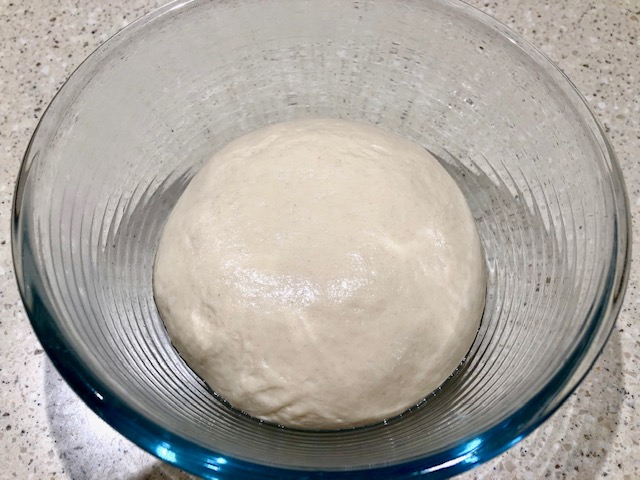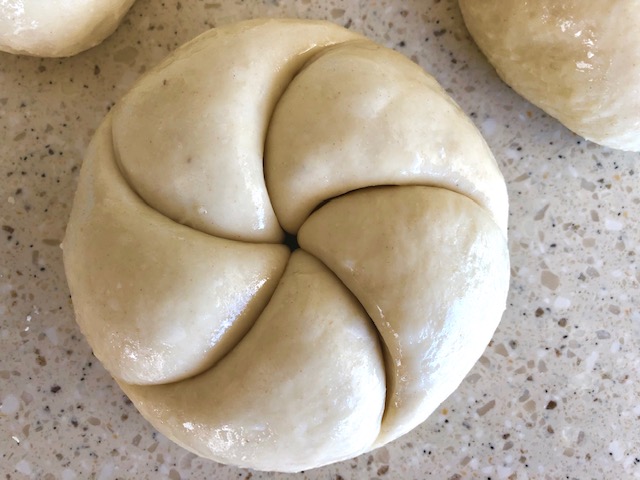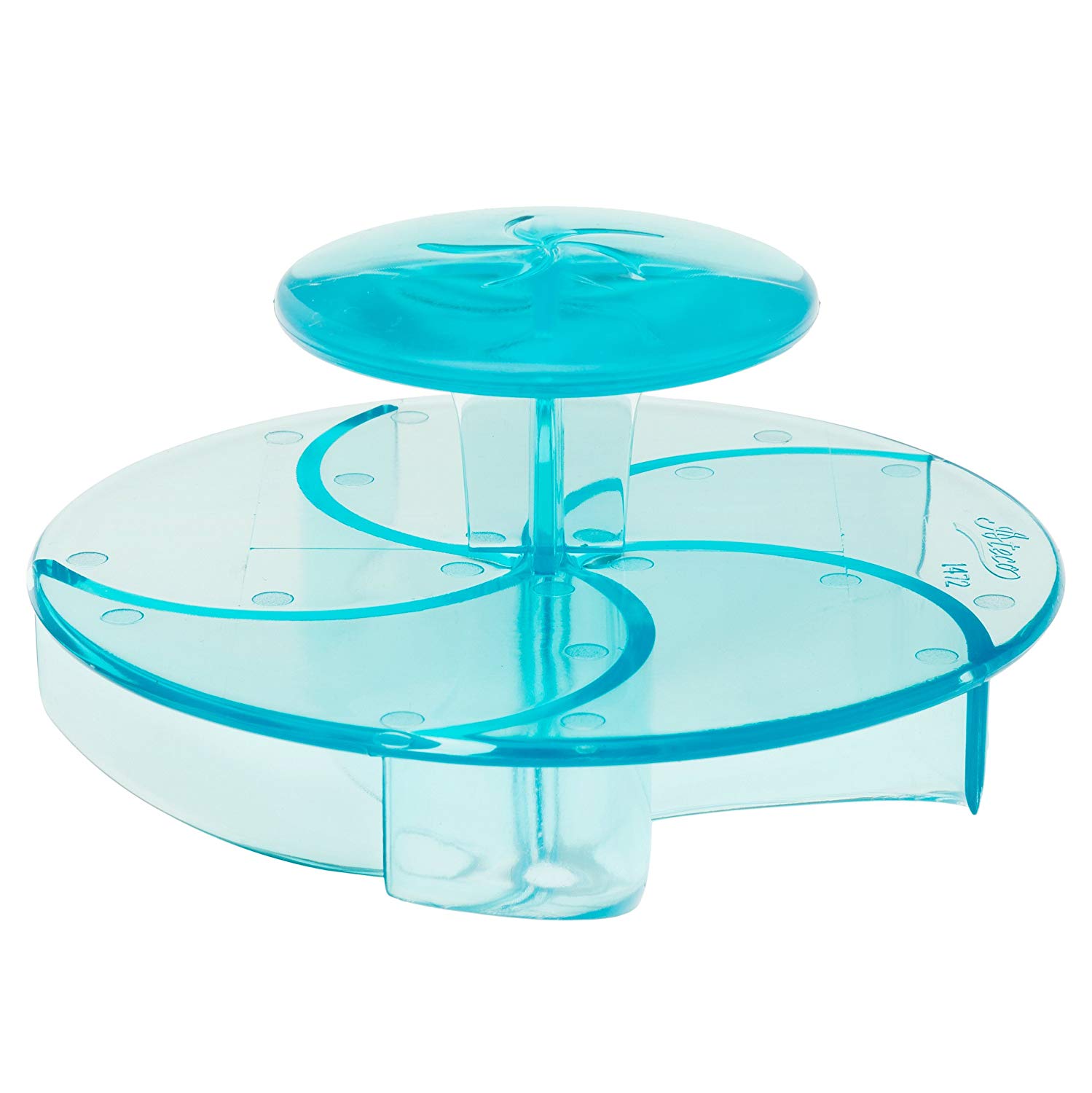Kaiser rolls are originally from Austria and typically they are round and crusty in texture. I think that the symmetrical pattern of five segments is very appealing as they are separated by arced cuts radiating from the centre to the edge. The recipe that I like to bake is from Peter Reinhart’s book The Bread Baker’s Apprentice. This version uses a pate fermentee that I like to prepare three days before the main bake starts. By resting the dough in a refrigerator it creates more complex flavours from the final bake. Other ingredients for this bake include Diastatic Barley Malt flour, eggs, and vegetable oil.
Kaiser Rolls

Kaiser Rolls Pate fermentee
After three days I remove the pate fermentee from the fridge and measure out the rest of the ingredients for the bake. I start to combine the ingredients with my working hand and hold the bowl with my other. I pull the dough from the bottom of the bowl and drag it up and over to the middle of the dough punching it down. I rotate the bowl a quarter of a turn and repeat until all of the flour is combined. I hold back around 50 grams of liquid from the final ingredients so the dough doesn’t become too wet. I don’t like to add extra flour to the mix because doing that will change the formula which can alter the rise of the dough. If you need to add extra water because the dough is dry then do so in small quantities. I continue to mix the ingredients until they are fully incorporated. I am looking for a tacky dough that is similar to the feel of a post-it note. Once the dough is at the consistency I want I cover the dough and let it autolyse (French for rest) for 20 to 30 minutes.

Kaiser Rolls (French Knead)
In the next step I develop the gluten by hand using the French kneading method for around 20 minutes until the dough develops a window pane effect. The dough is then rested in a lightly oiled bowl and sprayed with oil and covered in kitchen wrap for two hours or until the dough doubles in size.

Kaiser Rolls (balled)
Once the dough has doubled in size it is time to shape the individual rolls. I remove the dough from the bowl, weigh it, and divide it into pieces of around 105grams each. I am now going to shape the rolls so I take each piece and form it into a ball and then let them rest for ten minutes. To prevent the balled dough from sticking to the parchment paper I cut out a square piece of baking parchment and lightly mist it with oil and dust it with cornmeal or semolina flour.

Kaiser Rolls stamped
The next step is the fun part where I stamp the rolls or knot them by hand and then carefully flip them over and spray them with oil. The Kaiser roll stamps are readily available online for a small cost.

Kaiser Rolls Stamp
I let them rest on the baking parchment for 45 minutes covered with a box or a food grade plastic bag to prevent the rise from being impeded. I carefully flip them back over so the cut side is facing up and again spray them with oil and cover them and let them rest for 30 to 45 minutes.

Kaiser Rolls (Pre Bake)
Fifteen minutes before the rest time is complete I place a stone on the grill and turn on the BBQ and bring it to 425 degrees F (220 C). I uncover the rolls, mist them with water, and I now add a topping to the rolls. I have used poppy seeds but there are plenty of alternatives to personalise your bake.

Kaiser Rolls Baked
I take my pizza peel and slide it under the parchment paper and slide it straight onto the stone in the BBQ. I cook the rolls for ten minutes then rotate them 180 degrees and check the temperature with a probe and then lower the BBQ temperature to 400 degrees F (200 C). I check the rolls around five minutes later and when they reach 200 degrees F (95 C) in the centre I remove them using the pizza peel. I remove the rolls off the parchment paper and put them straight onto a cooling rack to let them cool. When they have fully cooled they are ready to be eaten.
I would highly recommend that you try the rolls with a good quality butter which will bring out the amazing flavour of the rolls. They are also fantastic with a local honey lightly spread over the butter. Enjoy.
If you want to recreate these Kaiser Rolls and many more superb bread recipes I can highly recommend the following book and the fantastic Kaiser stamp.
Peter Reinhart’s Bread Bakers Apprentice
Ateco Kaiser stamp
Written by thebbqbaker.com
Comments
This post currently has no responses.